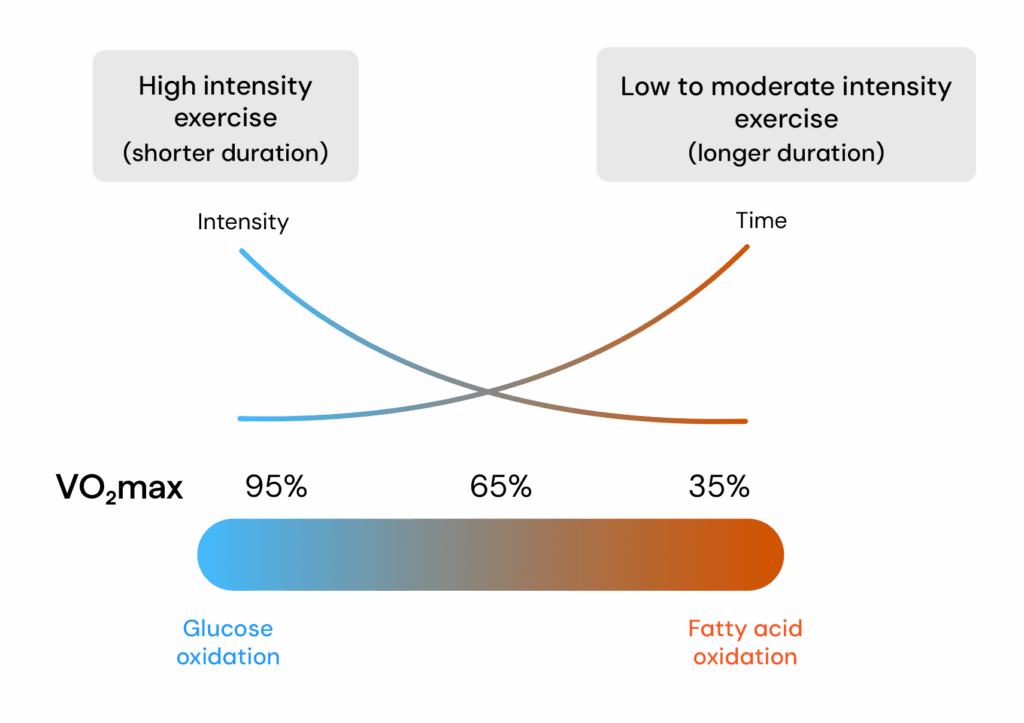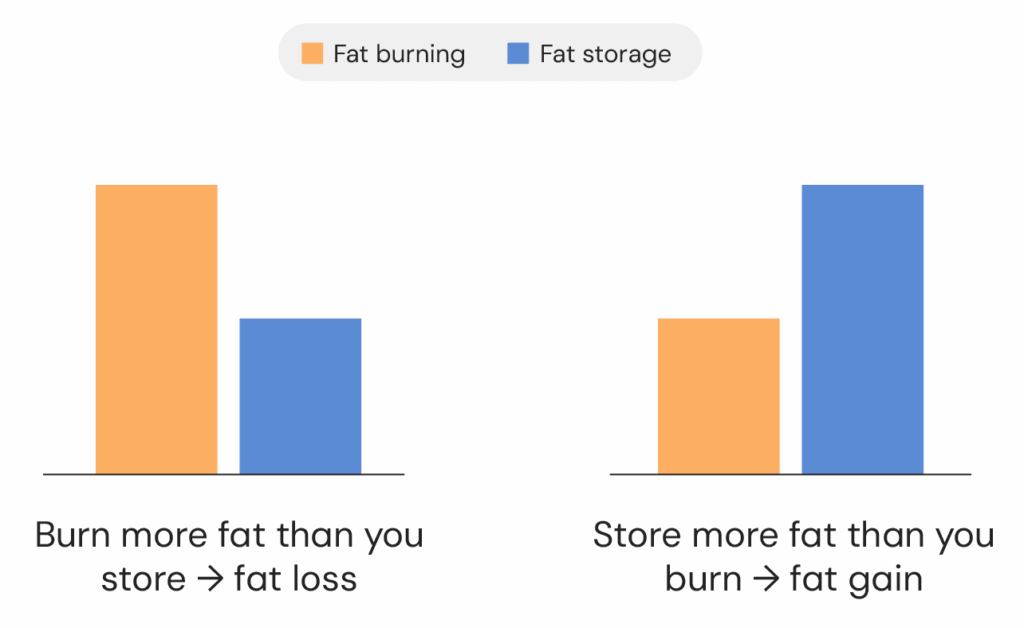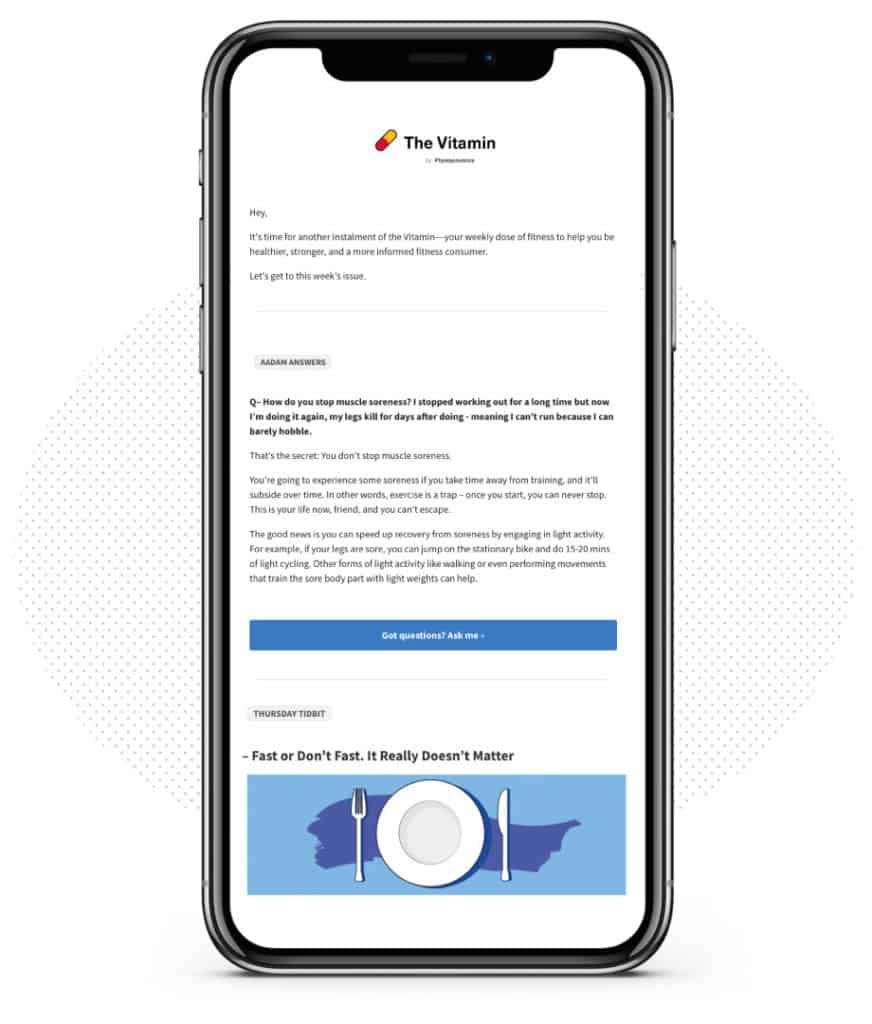There’s a lot of hype around incline walking for fat loss at the moment – specifically the claim that it’s better for fat burning compared to running. But is this actually true? Let’s find out.
Let’s start with a story – don’t worry, it’s a great story, and it’s starring you and your eternal quest for snacks.
You’re sitting on the couch and, I dunno, maybe you’re three videos deep in a YouTube rabbit hole about why the K-Pop Demon Hunters soundtrack goes unreasonably hard. As you’re lounging around not doing much of anything, your body’s quietly burning fat in the background.
After a few hours of this, you decide you want a snack and haul yourself off the couch and amble to the kitchen. Ah shit, would you look at that? Past You is an asshole who forgot to order groceries.
A trip to the store it is.
As you walk to the store at a moderate pace, your body hits peak fat-burning mode. Your muscle cells are pulling fatty acids from your fat stores to provide energy for the walk.
You’re halfway to the store when you hear it.
A roar.
You turn around and—impossibly, inexplicably—there’s a lion. A full-grown motherfucking Simba in your suburban neighbourhood. Look, I don’t have time to explain the lion. There’s a lion. It’s happening. By the way, did I say there was a lion? Because this isn’t the time to be questioning the narrator’s logistics.
So you do what anyone who isn’t named Steve Irwin would do – run. Suddenly, you’re sprinting at max capacity, and your body has shifted from burning fat to burning carbs (technically glucose).
But why?
See, your muscles run on ATP. Think of ATP like cellular currency, and without it, your muscles can’t contract. If your muscles can’t contract, you can’t run. If you can’t run, you become lion food. Both fat and carbs can produce ATP, but what matters is how quickly they can do it.
Producing ATP from fat is a long-winded process. First, the fatty acids have to be escorted into your mitochondria – power plants inside your cells – by a molecule called carnitine, which essentially serves as a shuttle bus for fat. Then, once inside, the fat gets broken down through an elaborate process to produce ATP. 1
This works great when you’re engaged in low-intensity activity that doesn’t require a lot of energy. But you might recall that a lion is chasing you, and your muscles are screaming for ATP right now.
This is where glucose comes in. Unlike fat, glucose is rapidly broken down and floods your mitochondria with fuel, and produces ATP much faster than fat can. 2
As you’re producing all this energy from glucose, you’re also creating a molecular traffic jam. The byproducts of glucose metabolism start hogging all the available carnitine (the shuttle bus that transports fatty acids to the mitochondria). As a result, fatty acids end up waiting outside the mitochondria while the mitochondria deal with glucose.
All of that (hopefully) explains how exercise intensity impacts your body’s fuel selection:
- Low intensity (35-40% max effort): Burning mostly fat
- Moderate intensity (60-65% max effort): A mix of fat and carbs
- High intensity (85%+ max effort): Almost all carbs.

So yes, lower-intensity cardio does burn a larger proportion of fat. But fat burning in the short-term tells us nothing about whether you’ll actually lose body fat.
Why fat burning doesn’t mean fat loss
Your body is constantly burning and storing fat. For example, when you wake up and delay breakfast for a few hours, your body breaks down stored fat for fuel. Later, when you eat, your body doesn’t need to rely on internal stores because it has energy coming in from an external source (food) – it will use whatever it needs and store the rest. This process goes on and on and on until the day you die.
What dictates whether you lose or gain fat is the net fat balance over time – are you storing more fat than you’re burning?

And your energy balance dictates your net fat balance. If you’re consistently storing more energy than you burn, you’ll gain body fat regardless of how many fat-burning workouts you do.
For example, Melanson and colleagues found that 24-hour fat burning did not increase when participants ate back the calories they burned. 3
A bigger issue with the fat-burning workout claim is the implicit assumption that these workouts burn enough body fat to make a meaningful difference in losing body fat.
Let’s run some numbers: Sedentary overweight men and women walking at a moderate pace of about 3 miles per hour (~40 % of VO2max) burn roughly 0.3 grams of fat per minute and 0.2 grams per minute, respectively. 4
So, a 30-minute walk might burn around 8 grams of body fat – about one tablespoon of peanut butter. Hell, even walking for 2 hours would only burn 30 grams of body fat; you probably eat that amount of fat in a single meal (and you’re probably not walking 2 hours every day).
Is incline walking better for fat loss than running?
The ‘incline walking is better for fat loss’ hype comes from a viral TikTok because of course it does.
The claim is that by walking on a treadmill with a 12% incline at a speed of 3 miles per hour for 30 minutes, you can burn as many calories as running, and because incline walking is a low-intensity activity, it can increase fat burning.
Well, a study published earlier this year investigated this exact claim. 5
Here’s a quick rundown of the findings:
- The total calorie burn was matched between the protocols, with roughly 310 kcal for running and 308 kcal for incline walking.
- Running was more efficient, achieving the same caloric burn in 24 minutes vs 30 minutes for incline walking.
- Around 40% of the calories burned during incline walking came from fat, compared to 33% during running.
If we take the percentages at face value, it does seem like incline walking was better for fat loss. But let’s convert these to grams of fat:

So incline walking burned an additional 3 grams of fat, or half a teaspoon of olive oil. Is this what people are getting excited about?
But there’s something else that should stand out. If 40% of the calorie burn came from fat, where’s the remaining 60% coming from? Well, carbohydrates.
If you look to the far right of the table below, you’ll see what percentage of the calories burned came from fat and carbohydrates in each condition.

So, incline walking might have burned more fat relative to running. However, the primary fuel source was still carbohydrates. In other words, despite being touted as a fat-burning workout, incline walking, at least in this form, is actually closer to moderate-intensity cardio, using a mix of carbs and fats.
The researchers even highlighted that people often misinterpret fat utilisation during a workout to mean more fat burning, when the driver of fat loss is the total energy deficit. But that didn’t stop people on Instagram from claiming “incline walking burns more fat than running.” Who cares about being diligent and accurate with what you put out, anyway, when you have likes and views to chase?
All said, there’s nothing special about incline walking, and the claim that it burns more fat than running is technically true but only a smidge more useful than fuck all. Regardless, short-term fat burning doesn’t mean you’ll lose body fat if you aren’t sustaining an energy deficit.
Instead of chasing ‘fat burning’ workouts, focus on creating a sustainable energy deficit via your diet and then do whatever type of exercise you enjoy and can stick to.
Thanks for reading. If you enjoyed this, you’d love the Vitamin

95% of my new content is only being sent to my email list. One email every Thursday, filled with actionable, evidence-based fitness advice to help you with your goals. If you enjoyed this, you’ll love my emails. You can learn more and subscribe for free here.